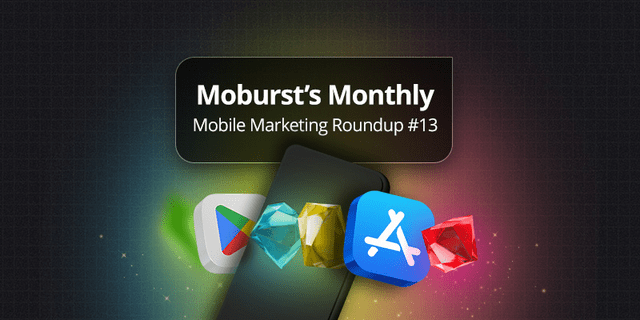
When it comes to iOS apps there is no better user acquisition tool than Apple Search Ads. Running ASA campaigns helps to increase brand awareness and app installs by promoting your app exactly where users are looking: at the top of App Store search results. In this post, we’ll share the key steps to take in scaling up your ASA campaign including the four tactical strategies for going about it, along with our recommended step-by-step guide for getting it done.
Choosing An ASA Scaling Strategy
It’s time to get started ramping things up with your ASA campaign, and reaping its benefits in paid performance. There are four tactical approaches in which you can scale your ASA in order to increase the volume of traffic your app receives. These include the following:
Increasing Your Cost-Per-Tap (CPT) Bid
Try raising your bid in order to be more competitive, but make sure to do it gradually. Plus, be careful, as this may negatively impact both ROI/ROAS, meaning the increase in the spend does not necessarily lead to an increase in revenue.
Expand Your Targeting and Match Types
You don’t want to just get more taps, you want those that lead to installs. Consequently, this particular strategy may not be suitable for some apps. It may also negatively impact ad performance ROI/ROAS due to less engaged users tapping on the ad.
Modify Your App’s Metadata
ASA relies on the app category and your app’s metadata (i.e. title, subtitle, keywords, etc.). In order to determine whether your ad is eligible to participate in a search auction, Apple’s relevance score analyzes your app’s metadata to determine whether your app is relevant enough to show an ad for the keyword you’re bidding on.
So, if you get no impressions for a keyword (and you already tried to increase the bid), it may be that the relevance score is too low. If that’s the case, try to add the keyword to your metadata in order to improve relevance.
Increasing Your Ad Account’s Keyword Volume
This strategy is by far the best and safest bet with the least amount of downside. It involves the gradual increase of new relevant keywords to your ad account over an ongoing period of time through the use of a Discovery Campaign.
How to Scale Up Your Campaign
Having determined that the tactic of increasing your ad account’s keyword volume is the best course of action, it’s time to get to work. The following are the recommended steps to keep in mind as you work to scale your ASA campaign and begin to drive more high-value installs.
Step 1: Setting Up Your Discovery Campaign
To kick things off you’ll need to set up your Discovery Campaign. Discovery Campaigns are used for finding new relevant keywords by using Broad Match and Search Match. To get started add all your existing keywords from Brand/Generic/Competitors (Exact) to two distinct ad groups.
The first of these ad groups will be your negative keywords. This will serve to avoid any conflicts between your ad groups. The second ad group will be your targeted Broad Match keywords. This ad group will help you to generate more of those all-important long-tail keywords.
Step 2: Divide Your Ad Groups & Conquer!
Now that we’ve created our structure it’s time to shift gears and get into the day-to-day optimization of the course of a seven day period. This process will include splitting our search terms into 3 new categories of ad groups generated by the Discovery Campaign.
The first of these categories should be classified as “Good” and include all our relevant search terms. As more and more of them are generated you will want to add them to a new Exact Search keywords ad group with a bid of 3X your CPA. You should begin to see downloads begin increasing as a result.
The next category of search terms to classify are those that are not relevant, underperforming, or in some cases not performing at all. These keywords should be moved to your Negative Exact keywords ad group for both Exact Search and Broad Match instances.
Finally, you will be left with a collection of keywords that true to their name do not provide enough data to fall into either category. In other words, they need more testing before either putting more money behind them or casting them aside. For that reason, we recommend another week of experimentation after which you should have a good indication of where they belong one way or the other.
Step 3: Continued Optimization
The last component in the process of scaling your campaign is optimization. More of an extension of the second step mentioned above requires ongoing attention and effort. Finding the correct balance between doing too much too soon and reaching a point of statistical relevance can be tricky. Therefore, we recommend conducting your optimization on a weekly basis in order to ample insights into the data being generated.
You can next expect to see your number of relevant keywords increase gradually as you continue to optimize your campaign. Not surprisingly, your app’s traffic will also begin to increase as your campaign successfully scales.
Conversely, you will also notice a decrease in your Discovery ad group traffic at the same time. Don’t be alarmed, it’s a good thing as it means exact negative keywords are consistently being added to that ad group. You may want to also increase your CPT bid in the Discovery ad group (Search Match & Broad Match Keywords) in order to keep mining new relevant (and non-relevant) keywords for the duration of your campaign.
Pro Tips for Successful ASA Scaling
Keep Your TTR as High as Possible
Your tap-through-rate (TTR) is the number of times your ad was tapped by users, divided by the total impressions your ad received. A high TTR is one of the main factors for determining whether your ad will show for a search impression compared to the competition.
Utilize Creative Sets
Simply put, using creative sets allows you to tailor the assets that are displayed to users based on what they’re searching for. It allows you to create ad variations that are specific to the keywords you have selected and is a great way to improve ad performance. One such example of this is displaying to your audience screenshots that are relevant to the keyword they have searched, thus helping to ensure the best results.
Separate Your Search Match Targets
It’s important to maintain a different ad group for your Exact keywords. Consider using Broad Match or Search Match On if you want to generate more impressions as Exact is the most restrictive match type.
Conclusion
If you have an iOS app, Apple Search Ads (ASA) are hands down the most effective way to generate traffic in the App Store and increase downloads. Getting started with them can be easy, however, scaling up your campaign to the next level can be tricky, and even costly if not done correctly. While there are at least four different ways to ramp things up, our experience shows that gradually increasing your ad account’s relevant keywords by far offers the lowest risk and highest reward. By following the proper procedure you can start seeing significant results in as quickly as a week, and with continued optimization, the sky’s the limit.
Still have questions about scaling your Apple Search Ads campaign? Get in touch with our media team today to find out how we can help.








